It looks to be one of the best years for the elderflower, this ancient hedgerow plant native to Britain. It is steeped in superstition and the blossom has special powers attributed to it, but for me, its best property is when it has developed into an aromatic cordial and is subsequently used as a mixer in a spirit based drink. Or/and added to gooseberries when stewing them. The combination of elderflowers and gooseberries is an unbeatable one.

How to Make Elderflower Cordial
by Maritravel
The heavily scented flowers make a wonderful, refreshing drink which, when stored in sterilised bottles will keep for several weeks to be diluted or used as a cocktail mixer.
From Limoncello to Elderflower Cordial - Grappa Base to Flower Base
I’ve had such success with making my favourite Italian liqueur, Limoncello, that I thought I’d have a go at something else that I like, and as the hedgerows are full of the sweetly-scented, creamy-white flowers at the moment I took myself off on a blossom-gathering walk.
Superstitions Associated with the Elderflowers.
Long regarded as sacred, rural inhabitants would not cut or burn the wood of the elder tree for fear of upsetting Mother Elder who lived in its trunk. There are many rumours associated with the tree, one of them being that Christ’s cross was made from elder wood: another is that it protects people from lightening if they stand under it in a storm: and yet another claims that it offers protection from evil spirits, to which end an elder tree is often grown outside the door to protect inhabitants of the house from the evil spirits who might try to enter.
Medicinal Uses for Elderflowers.
Of course they have medicinal properties as well and every part of the plant – bark, leaves, flowers and berries – have been used in domestic medicine since the days of Hippocrates. According to ancient lore, elderflowers could be used to encourage vomiting as a cure for overeating or a case of suspected poisoning, and it is written that Medieval herbalists used the roots as a diuretic, the bark to hasten labour and the berries to soothe piles. The bark of the tree was made into a tea to soothe the pains of a mother after childbirth and as a remedy for colds and sore throats.
Preparation of the Elderflowers
It is best to gather the flowers just as the tiny buds are beginning to open, best if you can gather them on a warm, dry day (never when wet). Never denude the trees either as you will want to pick the black elderberries later in the year for elderflower wine.
Before you begin to use the flowers, inspect them carefully for insects and remove these. Some people soak them in salt first and then rinse well to remove the salt. When prepared, place in a large bowl and leave to one side.
Adjust the recipes according to your liking, by adding more sugar or using less. The cordial will keep for several weeks in a bottle in the fridge, but if you add some citric acid and make sure the bottles are sterilised, it will last a little longer. Serve it diluted with ice-cold water or fizzy mineral water, or for a truly super drink add some sparkling wine or champagne. You can also splash some into a fruit salad, over strawberries with black pepper, and one of my friends adds a spoonful to every jelly she makes to give it a more sophisticated taste.
For true sophistication, try one of the many elderflower cocktails that are now becoming popular in metropolitan bars and hotels. The photographs below by Ewan Munro off two such cocktails were taken in two of London's swankiest places where the cocktail crowd gather.
Recipe for Elderflower Cordial
Making and Storing Home made Elderflower Cordial
Ingredients:
1 Kl Sugar
4 Cups Boiling Water
5 Lemons
1 Orange
A bunch of washed flower heads (about 8-10)
Citric acid if using.
Place 1 Kl of sugar into a large saucepan or Pyrex bowl and pour 4 cups of boiling water over, stir well to mix and make sure the sugar has dissolved and that a syrup has formed from the sugar and water. Grate the rind of five lemons and one orange with a fine grater and add to the sugar water. Slice the lemons into thick slices and add to the mix, stir well and add the flower heads earlier washed and set aside, and stir again. If you are using citric acid, add this just before the flower heads.
Cover with a clean cloth and leave to steep for forty-eight hours then strain through a clean muslin cloth into a clean container.
With a funnel, fill sterilized bottles and seal the bottles with swing-top lids, sterilised screw-tops or corks and store in a cool, dark place for a few weeks (not the refrigerator).
Once a bottle is opened store in the refrigerator for no more than 3 weeks.
STERILISING THE BOTTLES
To sterilize the bottles, rinse in the dishwasher or place in a medium hot oven (300°F/150°C) until the bottles are warmed through but not red-hot.
Special Note
Elderflowers also have a great affinity with gooseberries and a tablespoons of the cordial added to the gooseberries as they stew will lift the dish from the ordinary to the sublime
You might also like
Tonic and Gin a Drink Not Only For PleasureMixing alcoholic drinks with water or soda is one way of imbibing the concoct...
Amazing Craft Gin A Power SpiritGin is an alcoholic drink quite popular in Europe. It is consumed with tonic ...
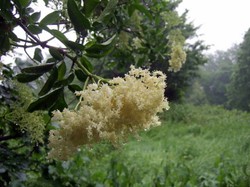

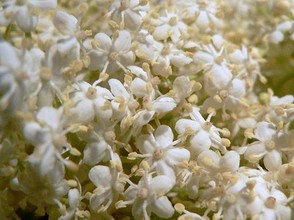
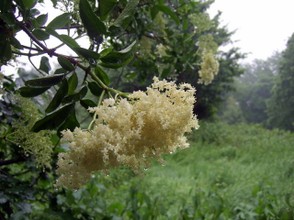
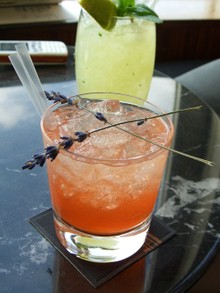


 The Alternative Picture Galleryon 04/20/2016
The Alternative Picture Galleryon 04/20/2016
 ROME - Where the Past Comes to Lifeon 03/26/2016
ROME - Where the Past Comes to Lifeon 03/26/2016
 Only in London - New Unique Guideon 01/25/2016
Only in London - New Unique Guideon 01/25/2016
 Manna, from Sicily, not from Heavenon 01/08/2016
Manna, from Sicily, not from Heavenon 01/08/2016
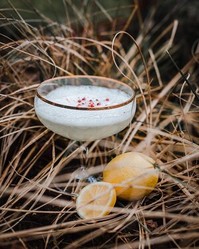
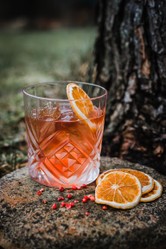
Comments
After writing my comment I began to realize that your bush might be short of potassium, which is essential for fruiting. If you use a high nitrogen feed you get much green leaf, but little fruit. Also the bush might need pruning. Generally get rid of any old wood in the middle of the bush, but this is the wrong time of the year for pruning, so wait until the bush goes dormant, which is after the leaves fall off in winter.
I love making preserves. I find it very satisfying to see jars and bottles of preserves, jams, cordials chutneys.
Rhubarb jam is the next thing for me to make next week.
Thanks for that tip, Francis. I must admit I haven't fed it at all. It's beside my raspberries which do very well so I just presumed it would do the same. I will promptly go out and feed it now. Probably too late, but better late than never. Yes, we do need a lot of water here because we don't have the rainfall other places have. I have just moved and my new garden isn't established yet. I'm imagining that I am still growing in my old garden with a good, well-nourished soil.
I have done a bit of quick research into why your gooseberry is not producing, and I can see no obvious answer. Gooseberry likes well-drained, fertile soil, so ensure that the soil is not over-wet, but Isle of Wight Soils are chalky and so not the wettest anyway. I suggest that you fertilize it, possibly adding well-rotted manure and seeing what happens next year.
I've been waiting for my gooseberry bush to produce fruits now for two years but so far zilch. Maybe next year? Meantime, it's back to the fruit farm to buy them while I await the damson season. Damson's are my all time favourites. I just bung a few kilos in the freezer and take out what I want as I want them, stew them and use them as jam. Making jam is a task too far and anyway, I prefer the stewed fruit.
Gooseberries used to be more common in English gardens than they are now, and so blending them with elderflowers would have been quite natural, as they too are common in England. This makes me think that Glossop gooseberry tart is traditional.
Morning Maritravel,
I have just bottled a batch of rhubarb and vanilla cordial as my elderflower cordial is running low already and the elderflowers have finished; it is so delicious.
Very interesting what you say about the gooseberries as Glossop Gooseberry Tart combines gooseberries with elderflower too. I think it must be a really traditional combination.
We forage for our elderflowers too. I do think homemade cordials are the way to go just now with all the E numbers that are added to our drinks. Thank you for this lovely post.
Maritravel, Elderflower cordials are a joy to make and an even greater joy to consume.
I find it a lot easier to comb the local country hedgerows for the elderflowers. It can take up a big chunk of your garden if you decide to grow one.
I like elderflower drinks - it's never occurred to me to make my own though. I'll need to plant a bush first next spring.